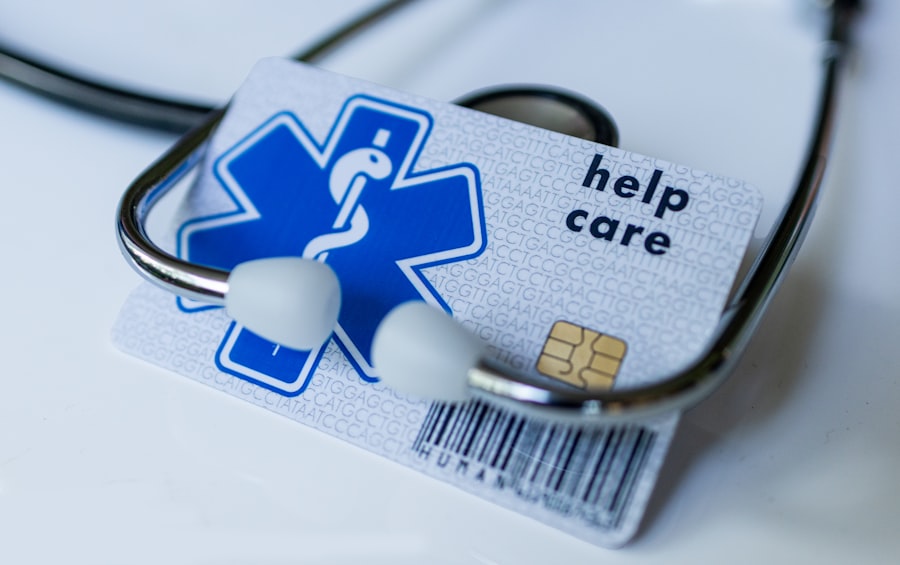Healthcare marketing plays a pivotal role in the modern medical landscape, where competition is fierce and patient expectations are continually evolving. Unlike traditional marketing, healthcare marketing is not merely about promoting services; it encompasses building trust, educating patients, and fostering long-term relationships. The healthcare sector is unique in that it deals with sensitive issues, requiring a nuanced approach that prioritizes empathy and understanding.
Effective marketing strategies can help healthcare providers differentiate themselves in a crowded marketplace, ensuring that they not only attract new patients but also retain existing ones. Moreover, the importance of healthcare marketing extends beyond mere patient acquisition. It serves as a vital tool for educating the community about health issues, preventive care, and available services.
By disseminating valuable information, healthcare organizations can empower patients to make informed decisions about their health. This educational aspect is particularly crucial in an era where misinformation can spread rapidly through social media and other channels. A well-executed marketing strategy can position a healthcare provider as a trusted source of information, ultimately enhancing its reputation and credibility within the community.
Key Takeaways
- Effective healthcare marketing is essential for reaching and educating patients.
- Identifying and understanding your target audience ensures tailored marketing strategies.
- Digital marketing and social media platforms are powerful tools for patient engagement.
- Creating informative content and optimizing for SEO enhances visibility and trust.
- Regularly measuring marketing outcomes helps refine strategies and improve results.
Identifying Your Target Audience
Identifying the target audience is a foundational step in any successful healthcare marketing strategy. Understanding who your patients are—demographics such as age, gender, income level, and geographic location—enables healthcare providers to tailor their messaging effectively. For instance, a pediatric clinic will have a different target audience compared to a geriatric care facility.
By segmenting the audience based on specific characteristics, healthcare marketers can create personalized campaigns that resonate with each group’s unique needs and preferences. In addition to demographics, psychographics play a crucial role in identifying the target audience. This includes understanding patients’ values, lifestyles, and behaviors.
For example, younger patients may prioritize convenience and digital access to healthcare services, while older patients might value face-to-face interactions and personalized care. Conducting surveys, focus groups, or utilizing data analytics can provide valuable insights into patient preferences and behaviors. By leveraging this information, healthcare organizations can craft targeted marketing messages that speak directly to their audience’s concerns and desires.
Utilizing Digital Marketing Strategies

In today’s digital age, healthcare marketing strategies must incorporate various online platforms to reach potential patients effectively. Digital marketing encompasses a wide range of tactics, including email marketing, pay-per-click advertising, and content marketing. One of the most significant advantages of digital marketing is its ability to provide measurable results.
Healthcare organizations can track engagement metrics such as click-through rates, conversion rates, and patient inquiries generated from online campaigns. This data allows for continuous optimization of marketing efforts to ensure maximum effectiveness. Moreover, digital marketing enables healthcare providers to engage with patients in real-time.
For instance, chatbots on websites can answer common patient queries instantly, improving user experience and increasing the likelihood of appointment bookings. Additionally, targeted email campaigns can nurture leads by providing valuable health information and reminders for check-ups or screenings. By utilizing these digital tools strategically, healthcare organizations can enhance their visibility and accessibility while fostering stronger connections with their patient base.
Leveraging Social Media for Healthcare Marketing
| Metric | Description | Typical Value/Range | Importance for Healthcare Marketing |
|---|---|---|---|
| Engagement Rate | Percentage of audience interacting with posts (likes, comments, shares) | 1% – 5% | Measures how well content resonates with patients and followers |
| Follower Growth Rate | Rate at which new followers are gained over time | 5% – 15% monthly | Indicates expanding reach and potential patient base |
| Click-Through Rate (CTR) | Percentage of users clicking on links in posts or ads | 0.5% – 3% | Shows effectiveness of call-to-action and content relevance |
| Conversion Rate | Percentage of social media visitors who take a desired action (appointment booking, sign-up) | 2% – 10% | Measures success in turning engagement into patient acquisition |
| Impressions | Number of times content is displayed to users | Varies widely by campaign size | Indicates overall visibility and brand awareness |
| Sentiment Analysis | Ratio of positive to negative mentions or comments | 70%+ positive preferred | Reflects public perception and trust in healthcare brand |
| Response Time | Average time taken to respond to patient inquiries on social media | Within 1-2 hours ideal | Enhances patient satisfaction and engagement |
Social media has transformed the way healthcare organizations communicate with their audiences. Platforms like Facebook, Twitter, Instagram, and LinkedIn offer unique opportunities for healthcare providers to engage with patients on a more personal level. By sharing informative content, success stories, and health tips, organizations can build a community around their brand while establishing themselves as thought leaders in the industry.
Social media also allows for two-way communication; patients can ask questions or share their experiences, fostering a sense of trust and loyalty. However, leveraging social media effectively requires a strategic approach. Content should be tailored to fit the platform’s unique characteristics; for example, Instagram is highly visual and may benefit from infographics or short videos demonstrating procedures or health tips.
On the other hand, LinkedIn is more suited for professional networking and sharing industry insights or research findings. Additionally, healthcare organizations must be mindful of compliance with regulations such as HIPAA when sharing patient stories or testimonials. By navigating these complexities thoughtfully, healthcare providers can harness the power of social media to enhance their marketing efforts significantly.
Creating Engaging Content for Patient Education
Content creation is at the heart of effective healthcare marketing. Engaging content not only attracts potential patients but also serves as an educational resource that empowers individuals to take charge of their health. This can include blog posts, videos, infographics, webinars, and downloadable resources like e-books or checklists.
The key is to provide valuable information that addresses common patient concerns or questions while maintaining an approachable tone. For instance, a healthcare provider might create a series of blog posts addressing seasonal health issues—such as flu prevention during winter months or allergy management in spring—coupled with engaging visuals and actionable tips. Video content can also be particularly effective; short clips explaining procedures or showcasing patient testimonials can humanize the practice and make it more relatable.
By focusing on patient education through engaging content, healthcare organizations not only enhance their visibility but also build trust with their audience.
Utilizing Search Engine Optimization (SEO) for Healthcare Practices

Search Engine Optimization (SEO) is an essential component of any digital marketing strategy for healthcare practices. With an increasing number of patients turning to search engines to find medical information or locate providers, optimizing online content for search engines is crucial for visibility. Effective SEO involves researching relevant keywords that potential patients are likely to use when searching for services and incorporating these keywords naturally into website content.
In addition to keyword optimization, local SEO is particularly important for healthcare providers. Many patients search for services within their geographic area; thus, ensuring that your practice appears in local search results is vital. This can be achieved by creating a Google My Business profile, encouraging patient reviews, and ensuring consistent NAP (Name, Address, Phone Number) information across all online platforms.
By focusing on both general and local SEO strategies, healthcare organizations can significantly improve their online presence and attract more patients.
Building a Strong Online Reputation
A strong online reputation is invaluable in the healthcare industry where trust is paramount. Patients often rely on online reviews and ratings when choosing a healthcare provider; thus, managing this reputation effectively is essential. Encouraging satisfied patients to leave positive reviews on platforms like Google or Healthgrades can enhance credibility and attract new patients.
However, it’s equally important to address negative feedback promptly and professionally; this demonstrates a commitment to patient satisfaction and willingness to improve. Additionally, transparency plays a crucial role in building an online reputation. Sharing information about staff qualifications, treatment options, and patient success stories can foster trust among potential patients.
Regularly updating your website and social media profiles with fresh content also signals that your practice is active and engaged with its community. By prioritizing reputation management as part of your overall marketing strategy, healthcare organizations can cultivate a positive image that resonates with current and prospective patients alike.
Measuring the Success of Your Healthcare Marketing Efforts
Measuring the success of healthcare marketing efforts is essential for understanding what works and what doesn’t within your strategy. Key performance indicators (KPIs) such as website traffic, conversion rates (appointments booked), social media engagement metrics (likes, shares), and email open rates provide valuable insights into campaign effectiveness. Utilizing tools like Google Analytics allows healthcare organizations to track user behavior on their websites—identifying which pages attract the most visitors or where users drop off in the appointment booking process.
Furthermore, patient feedback surveys can offer qualitative data on how marketing efforts are perceived by the audience. Understanding patient satisfaction levels regarding communication methods or educational content can inform future strategies and help refine messaging to better meet patient needs. By continuously measuring and analyzing these metrics, healthcare providers can adapt their marketing strategies dynamically—ensuring they remain relevant in an ever-changing landscape while effectively meeting the needs of their patients.



